And Then, There Was Sound
There is in souls a sympathy with sounds: And as the mind is pitch’d the ear is pleased With melting airs, or martial, brisk or grave; Some chord in unison with what we hear Is touch’d within us, and the heart replies.
— William Cowper
Sound is an important component of modern computer games, without sounds, games lose a lot of atmospheric detail.
Sound
Sound is a vibration that propagates as an audible wave of pressure through a transmission medium such as a gas, liquid or solid. Obviously, those mechanical waves travel with different velocities as the medium varies, for example sound travels a lot faster through water (1478 m/s) than through air (344 m/s) — which is why sonars work so well in water.
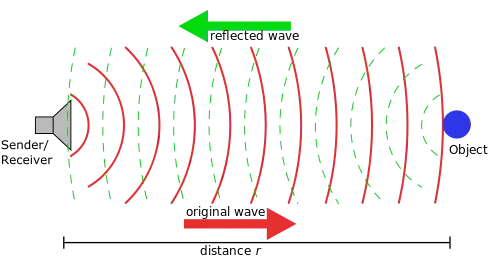
Besides its velocity, there are two other parameters to a sound wave: its amplitude and its frequency.
The amplitude is a measure of how much air volume is moved over a single period of time. Large speakers (and big-mouthed people) move more air, thus the sound they emit is stronger or more intense.
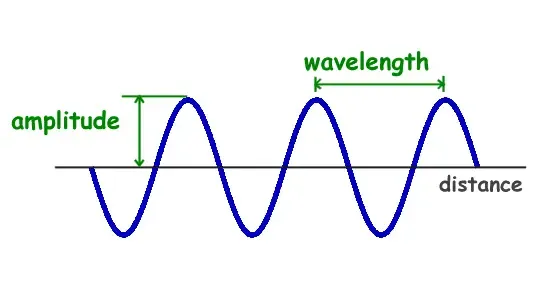
A frequency, strictly speaking, is the number of occurrences of a repeating event per unit of time. In our context, the frequency, or wavelength, is how many complete waves are emitted per second by the sound source. The frequency is measured in Hertz (Hz).
Most human beings can hear sounds in the range between 20 and 20000 Hz. The average male has a voice that ranges from 20 to 2000 Hz, while the voice of an average female ranges from 70 to 3000 Hz. (Note to all the feminists: there are differences between men and women — men have more bass and women have more treble.)

Mathematically speaking, the velocity of sound,
Also, note that sounds with the same frequency and the same amplitude might still sound differently, due to having different wave forms (think of sinus waves or sawtooth waves).
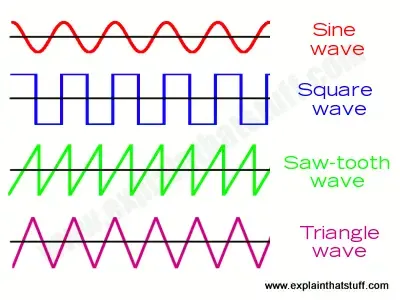
Our ears have numerous little hair-like structures called stereocilia, which are responsible to catch sound waves. Each of these cilia can detect sound waves of different frequencies. Once a sound wave enters the ear, the cilia resonate and send the according signals to the brain, which then transforms those signals into the perception of sound. (Can you imagine creatures that do not hear, but see sound?)
The form of a single pure tone will always be a sine wave, with an arbitrary frequency and amplitude. Mixed thousands of those pure tones together, we get the spectrum of a sound. The most basic waveform is the sine wave, as all other waveforms can be represented by linear combinations of several sine waves. This is the topic of Fourier analysis, which we will postpone to later, more advanced, tutorials.
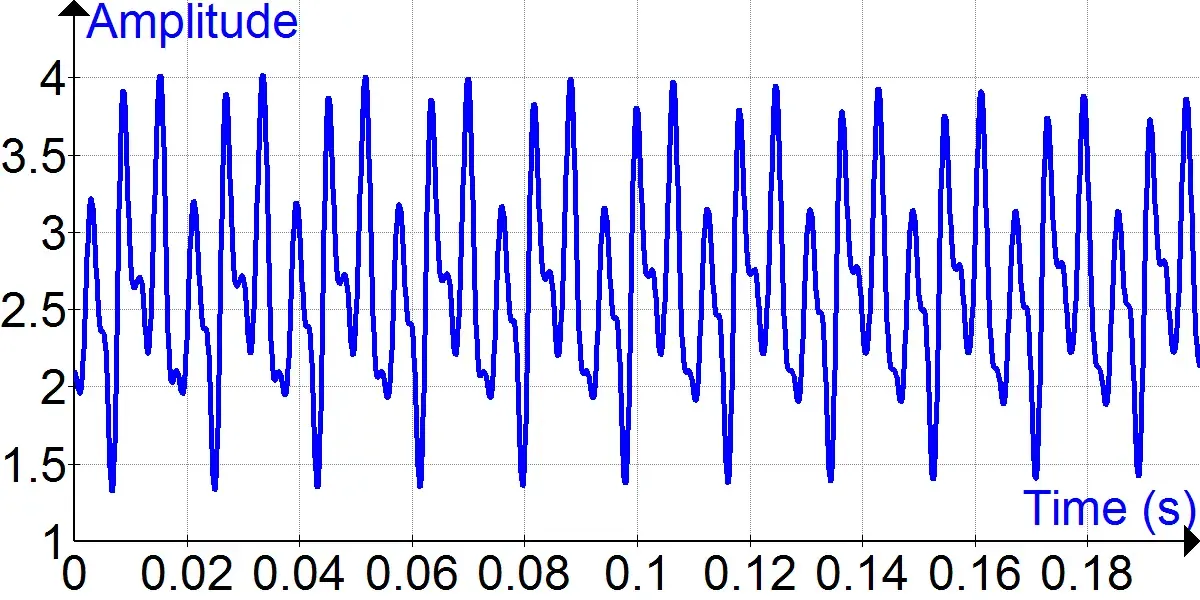
For now, I just want to give a short outlook into the beautiful world of mathematics.
Can you hear the shape of a drum?
A famous mathematical question is whether you can actually hear the shape of a drum. To hear the shape of a drum is to infer information about the shape of the drumhead from the sound it makes. Can One Hear the Shape of a Drum? was the title of an article by Mark Kacin the American Mathematical Monthly in 1966, but the phrasing of the title is due to Lipman Bers. The mathematics behind that questions can be traced all the way back to Hermann Weyl.
The frequencies at which a drumhead can vibrate depends on its shape. The Helmholtz equation calculates the frequencies if the shape is known. These frequencies are the eigenvalues of the Laplacian in the space. A central question is whether the shape can be predicted if the frequencies are known. No other shape than a square vibrates at the same frequencies as a square. Kac did not know whether it was possible for two different shapes to yield the same set of frequencies.
Mathematically speaking, a drum is conceived as an elastic membrane, which is represented by a domain in the plane. Two domains are called isospectral, or homophonic, if they have the same spectrum, i.e. the same eigenvalues. The Dirichlet eigenvalues are precisely the fundamental tones that the drum in question is capable of producing, i.e. they appear naturally as Fourier coefficients in the wave equation of the emitted sound wave. The question can thus be reformulated as follows: What can be inferred on the domain if one only knows its eigenvalues?
John Milnor immediately observed that a theorem
by Ernst Witt implied the existence of two
This is an image of the two surfaces with the same spectrum that they had constructed. Notice that both polygons have the same area and perimeter.
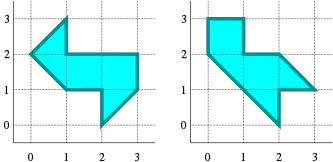
Some information might still be acquired. Mr. Zelditch showed that the question can be answered positively for certain
convex planar regions with analytic boundary, and today it is known that the set of isospectral domains is compact in
the
Digital versus MIDI
There are two kinds of sounds that a computer can produce: digital and synthesized. Digital sounds are recordings of sounds, while synthesized sounds are programmed reproductions of sounds based on algorithms.
Digital Sound
Digital sound obviously needs digitalization, i.e. a way to encode data in a digital form of ones or zeros. Just as an electrical signal can create sounds by causing a magnetic field to move the cone magnet of a speaker, talking to a speaker creates the opposite effect. That means that the speaker then produces electrical signals based on the vibrations it feels.
Thus, with proper hardware, it is possible to digitize sounds. Once the sound is recorded into memory, it can be processed or simply played back with a digital to analogue converter.
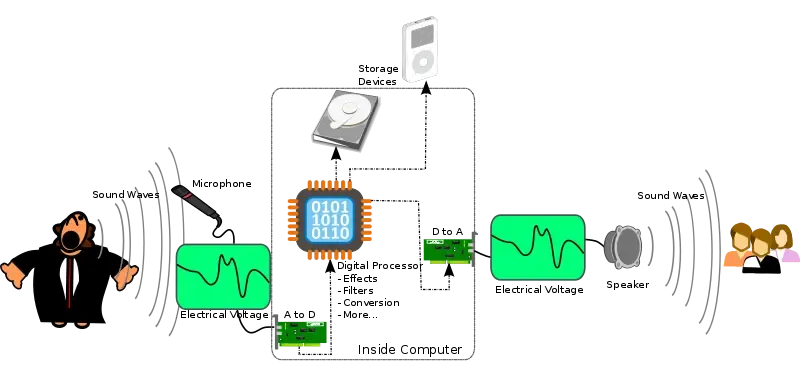
The number of samples of a sound recorded per second is called the sample rate. If we want to reproduce a sound, the sample rate must be at least twice the frequency of the original sound. Thus, for example, if we intend to reproduce a human voice, the sound must be sampled at 4000 Hz. The mathematical reasoning behind this is that if we can sample the highest frequency sine wave of a sound, we can sample all the lower ones as well. Can you figure out why you need the double of the frequency to sample a sine wave? (Hint: Sine waves do rise and fall.) For the mathematically interested, have a look at the Nyquist-Shannon theorem.
The second parameter of a sound, the amplitude, also plays a crucial role when sampling a sound. The so called
amplitude resolution defines how many values are available for the amplitude. For example, with a 16-bit resolution,
there are
To conclude: Digital sound is a recording or sampling of sound converted into a digital form from an analogue signal.
Synthesized Sound
Synthesized sound isn’t a real sound converted into a digital form; it is a mathematical reproduction of a sound. Playing back a single tone is easy, but real sound is made up of many frequencies, they have undertones, overtones and harmonics, for example. Thus, to produce full sound, the hardware must be able to play back many base sounds simultaneously.
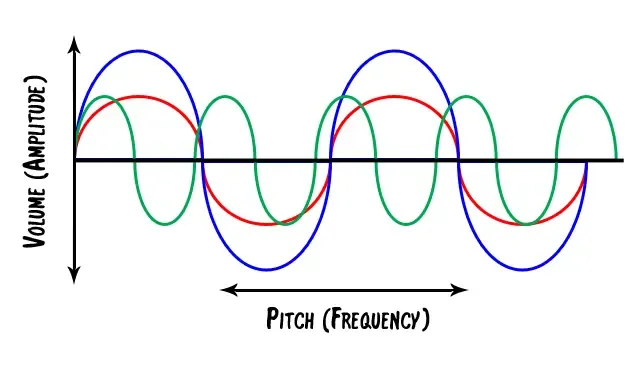
One of the first attempts to create synthesized sounds was the so-called Frequency modulation (FM) synthesis. FM synthesis feeds the output of a signal back to itself, thus modulating the signal and creating harmonics from the original single sine wave.
About the same time as FM synthesis, a technical standard for music synthesis was introduced, the Musical Instrument Digital Interface (MIDI) standard. Instead of digitalizing a sound, a MIDI document describes a sound as key, instruments and special codes:
Channel 1: B sharpChannel 2: C flatA drawback to this format is, that the synthesis is up to the hardware, and thus different hardware produces different sounds. The considerable gain in memory size compared to digital music (a few kilobytes against a few megabytes) often made up for that drawback, though.
To further increase the quality of synthetic sound, a process called wave table synthesis was introduced. Basically, wave table synthesis works like this: the wave table has a number of real, sampled digital sounds which can be played back at any desired frequency and amplitude by a digital signal processor. Obviously, this takes up a bit more memory again, but the increase in quality is often worth it. As computers got faster, it also became possible to have software synthesizer-based wave table systems.
To take things even further, wave guide synthesis was introduced. By using special hardware, the sound synthesizer can generate a mathematical model of an instrument and then actually play it! With this technology, the human ear can no longer perceive a difference between real and synthesized sound.
So much for a basic introduction to the theory of sound. Let us briefly examine what type of sound is needed in a game.
Basic Sound System
At the most basic level, a sound system must be able to play back sounds at any given time. This can be done using our newly implemented event queue.
Unfortunately, playing one sound at a time is not good enough in most cases. Imagine a dog running around in the garden, playing fetch, for example. If we played the same footstep sound all the time, it would become repetitive and boring rapidly, we thus already need different sound files for the same sound effect.
Another important thing to consider is that a computer only has a finite number of sound channels it can use at the same time, thus, sometimes, the game has to prioritize sounds, i.e. we have to play back those sounds that are important and ignore the less important ones. An example of this would be two cars crashing into each other on a road next to the garden our dog is playing in. Further, imagine that the dog has invited many of his friends to play with. Obviously, the sound of the cars crashing would be more important than playing back a pawstep sound for each dog in the garden.
To be able to do this, our game engine will handle something we will call sound events. A sound event is a map (I love mappings!) between a game event and a sound (or multiple sounds). The game will not directly call for a sound to be played, but it will rather trigger a sound event.
There is another thing we have to consider: From how far away do we want the car crash to be heard? It would be quite useful if we could define a maximum distance for sound to travel — we will call this the fallof of a sound event.
This leads to the following first draft of a sound event:
struct SoundEvent{ unsigned int fallof; unsigned int priority;
std::vector<SoundFiles*> sounds;}There is yet another thing we have to think about. Imagine the game world having different undergrounds, such as grass and stone, or even caves for the dog to explore. Obviously, the pawsteps will sound differently in each scenario. We thus need to be able to switch between sounds based on game variables:
struct SoundEvent{ unsigned int fallof; unsigned it priority;
std::map<std::string, std::vector<SoundFiles*> > sounds;}Now the map stores pairs of strings and vectors of sound files to be able to associate different conditions with different sound files.
We will see further examples of this in the next tutorial, when we will actually implement a sound system. Take note though that creating different sound files with all those little changes to the footstep sound will take a lot of memory. It would most probably be better to use digital signal processing (see above) to simply alter the sounds on the go.
In the next tutorial, we will learn how to use XAudio2 to implement a basic sound system.
References
Literature
(in alphabetic order)
- Game Programming Algorithms, by Sanjay Madhav
- Game Programming Patterns, by Robert Nystrom
- Microsoft Developer Network (MSDN)
- Tricks of the Windows Game Programming Gurus, by André LaMothe
- Wikipedia